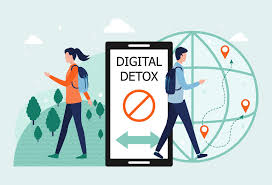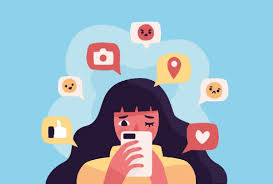Digital Detox: How to Reclaim Your Focus in a Distracted World

Break free from the noise and rediscover clarity in a screen-saturated age.
In today’s hyper-connected world, staying offline feels almost unnatural. We wake up to alarms on our phones, scroll through social media before getting out of bed, and spend our workdays toggling between apps, emails, and messages. By evening, we’re binging shows while simultaneously texting and browsing. This always-on culture is slowly eroding our attention spans, increasing anxiety, and disconnecting us from reality—even as we remain constantly “connected.”
Enter the concept of the digital detox—a conscious decision to take a break from screens and digital devices in order to restore mental clarity, emotional balance, and true human connection. While it may sound drastic, even short-term detoxes can lead to noticeable improvements in focus, sleep, and overall well-being. But what does a digital detox actually involve? And why is it becoming more crucial with each passing year? Let’s explore how disconnecting can be the first step toward truly reconnecting—with yourself, your surroundings, and the present moment.
A digital detox refers to a period of time during which a person refrains from using tech devices such as smartphones, computers, and tablets. The goal is to reduce stress, increase focus, and reconnect with the present moment.
Most people spend an average of 7-10 hours per day looking at screens. Whether it’s work emails, endless scrolling on social media, or binge-watching shows, our brains are overloaded with input. This has led to: What Is a Digital Detox?
Why We Need a Digital Detox
Digital overload affects our brain chemistry. Continuous notifications trigger dopamine loops, making tech use addictive. Meanwhile, blue light exposure disrupts melatonin production, harming our sleep cycle.
Ask yourself:
If you answered yes to any of these, it’s time to consider a break.
Begin with a tech-free hour each day. Use that time to read, walk, cook, or talk with someone face-to-face.
Turn off non-essential notifications. Use “Do Not Disturb” features and avoid checking email outside work hours.
Keep phones out of the bedroom, dining area, or bathroom. These boundaries promote better sleep and mindful eating.
Apps like Moment, Forest, or Digital Wellbeing can help track screen time and encourage breaks.
Try a full 24-hour detox once a week. Use the time to reconnect with hobbies, nature, or loved ones.

The Science Behind Screen Fatigue
Signs You Might Need a Digital Detox
How to Do a Digital Detox (Without Going Cold Turkey)
1. Start Small
2. Set Boundaries
3. Designate Tech-Free Zones
4. Use Tools to Track Usage
5. Go Offline One Day a Week
Many report dramatic improvements. One user said: “After 3 days without social media, I felt calmer and more present. I hadn’t realized how distracted I was.”
A detox isn’t a one-time fix—it’s a practice. Set long-term goals, such as:

The Benefits of a Digital Detox
Stories from People Who Unplugged
Creating a Long-Term Digital Wellness Plan
Technology isn’t the enemy—but our relationship with it needs rebalancing. A digital detox can help you reclaim your focus, creativity, and peace of mind. Try it—even for a day—and see what changes for you.

Conclusion
Deep Dive: How a Digital Detox Can Transform Your Brain
Beyond improving focus and sleep, a digital detox can actually reshape how your brain functions. Studies in neuroscience have shown that constant digital stimulation reduces gray matter in the prefrontal cortex—an area responsible for decision-making, impulse control, and emotional regulation. By taking intentional breaks from screens, we give this critical brain region time to recover and rewire. The brain, through a process called neuroplasticity, can heal itself and form new pathways when freed from constant digital noise.
In fact, even a 72-hour digital break can dramatically lower cortisol levels—the hormone responsible for stress. This biological shift makes it easier to regulate emotions, think clearly, and respond more thoughtfully instead of reacting impulsively. A detox allows the body’s parasympathetic nervous system—its “rest and digest” mode—to take the lead over the adrenaline-driven “fight or flight” mode we fall into when bombarded by notifications and alerts.
Furthermore, creativity and imagination—both tied to our brain’s default mode network—are activated more when we experience boredom or unstructured time. In a screen-filled life, boredom rarely happens. But it’s precisely in those unfilled moments that your brain sparks new ideas. That’s why people often have breakthroughs in the shower, on a walk, or during daydreams. Unplugging reignites that inner creative engine.

Another transformative benefit of a digital detox is the ability to reconnect with your own thoughts. When we constantly distract ourselves with scrolling, we lose touch with our internal dialogue. Reflection, introspection, and even emotional processing require quiet mental space. When you remove the constant influx of content, your brain finally has room to think, heal, and process life experiences. This can reduce anxiety, help resolve inner conflict, and promote emotional growth.
In short, a digital detox isn’t just about less screen time—it’s about creating space for a better you. It’s about reclaiming your mind, emotions, and creativity. The next time you feel overwhelmed or mentally exhausted, consider whether a pause from tech is the reset your brain has been waiting for. Even small changes, practiced consistently, can result in lasting cognitive clarity and a more peaceful, present life.
